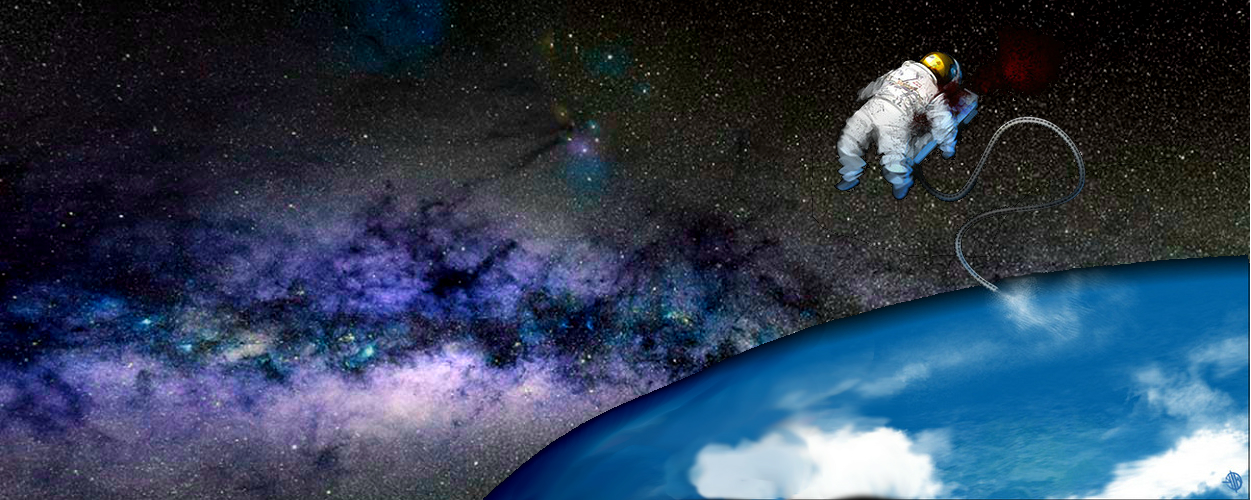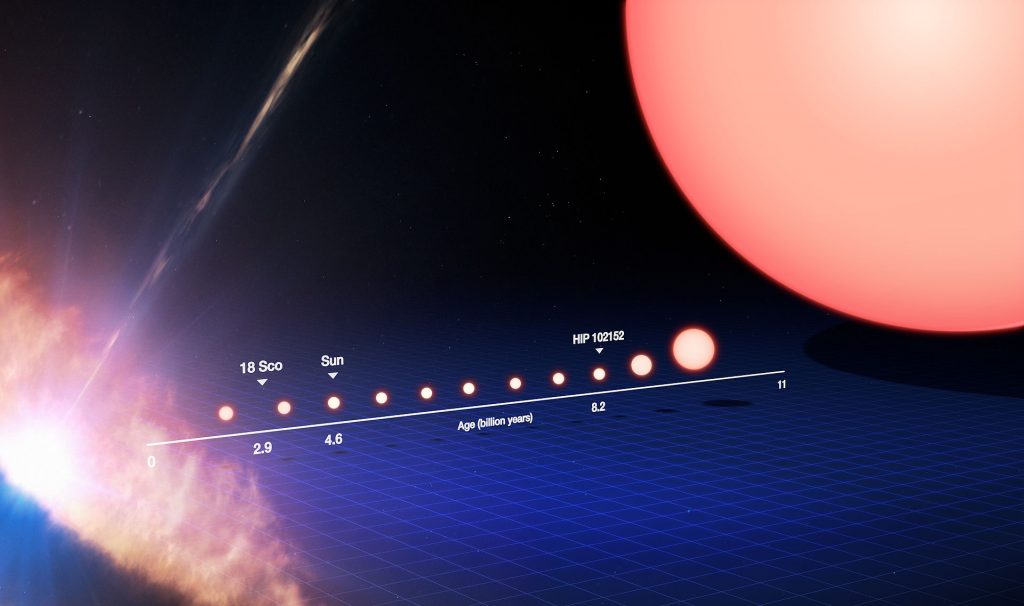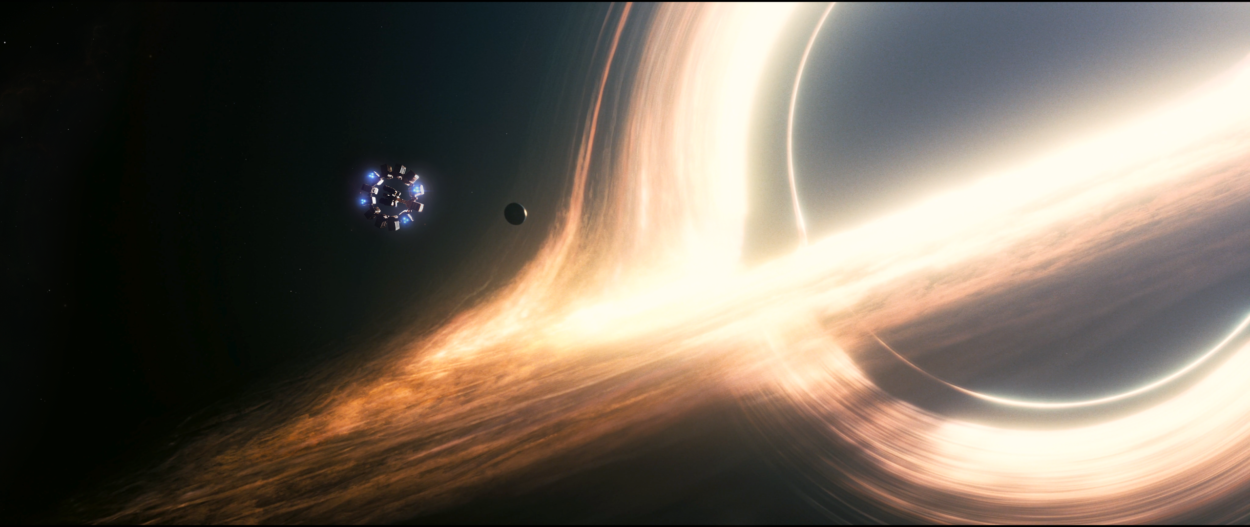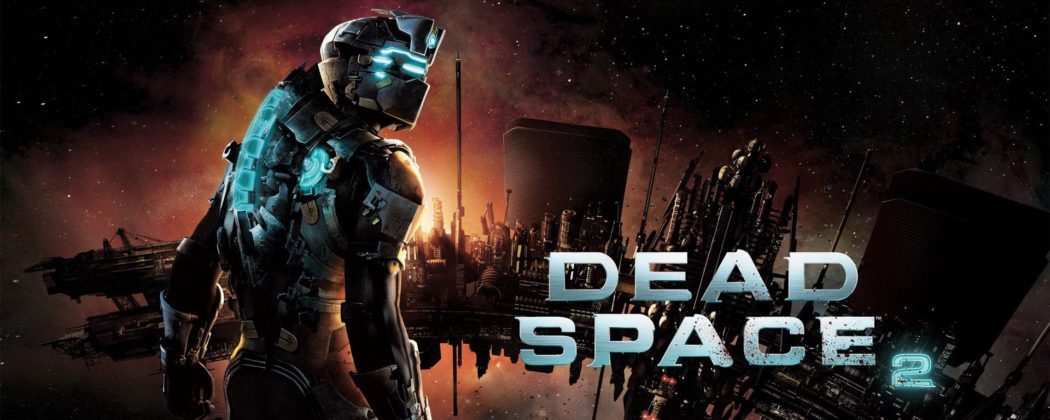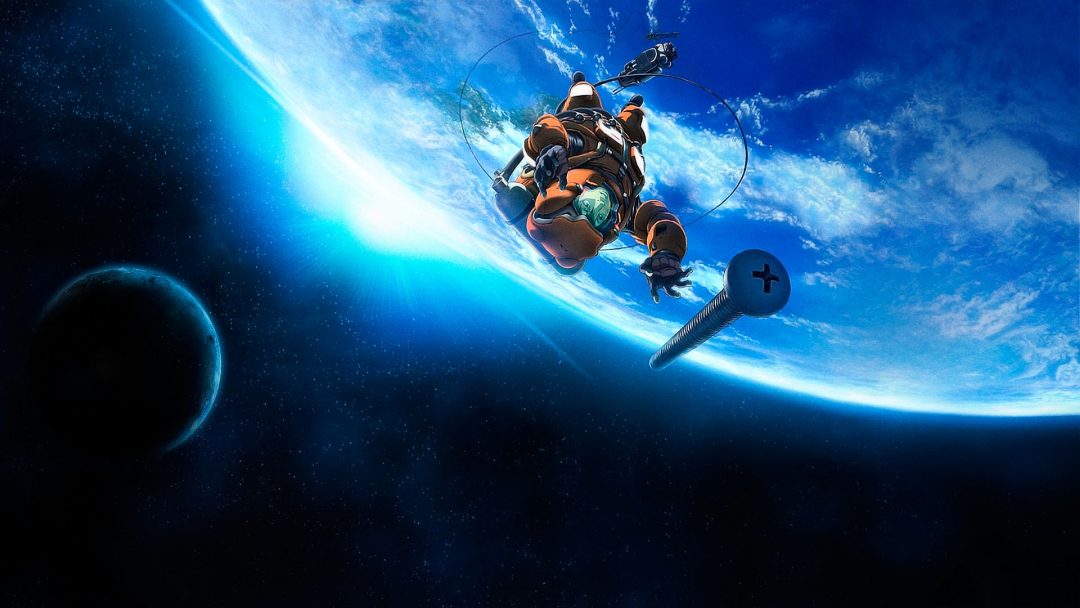Space really is the final frontier. It is where human beings were always meant to go, and our people will one day inhabit multiple systems and we will live the science fiction high life. But before we can get there and claim our interstellar destiny, there are billions and billions of ways for us to die out there. We’re here to help though, with our guide to Dying Horribly in Space. These are listed from the smallest to the biggest with examples and anecdotes for what the unwary space traveler might encounter if their particular destiny involves a lot of screaming.
Dust
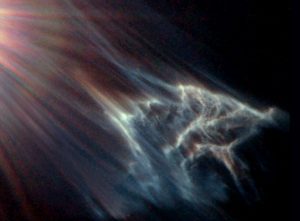
No seriously, dust. This is not to be confused with “junk” like what eventually killed Danny Ocean in Gravity. I’m talking about honest to goodness dust particles like the stuff that covers all the flat surfaces at your nana’s house. It’s very likely one of the most dangerous things in space, and it has everything to do with exactly how fast you’re going. Let’s get really fun and do some math! If a small particle that weighs 0.01 kg is floating in the depths of space, and a spaceship is cruising at 1/3 of light speed, the impact of the 2 objects will cause an explosion on the order of about 12 kilotons. If that sounds like a lot, that’s because it is. For a point of comparison, the Little Boy atomic bomb was 15 kilotons. Because of how velocity and impact work, if you increase the speed of the ship you will increase the power of the resulting explosion. If your sci-fi ship is going at 1 light speed then the resulting impact is going to be 305 kilotons, which if it happened on Earth would do this:
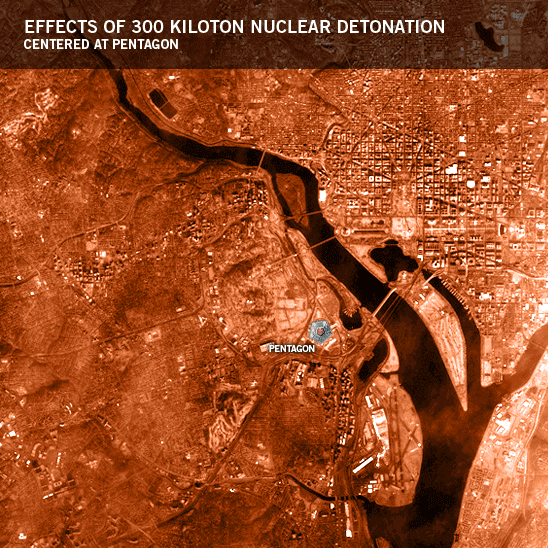
Getting up to Warp 9 (which in Voyager was around 2900 times the speed of light) gives us 591 megatons, which is almost 12 of these if the shield over goes down. The best (or worst) part is that unlike the other things on this list, dust is almost everywhere, so it’s not a question of if you’ll hit one of these, but when. Dust doesn’t mess around, so shields up people.
Gas Giants
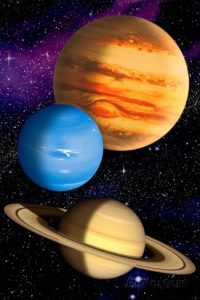
They’re big, surrounded by moons, and gorgeous. They’ll also kill you stone dead if given the chance. Let’s imagine a nightmare scenario where you fell out of your ship over Jupiter. Perhaps you neglected to heed the “Fasten Seatbelt” sign. Either way you’re falling out of the doors towards the mocha and sloppy joe giant. The first thing that will probably kill you is the magnetosphere. Sweeping around Jupiter (and other planets too, like ours) is a magnetosphere that interacts with the solar wind. But, since Jupiter (and other Gas Giants) are bigger than Earth, their magnetosphere is a lot stronger. It’s so strong in fact that it’s radioactive, and will kill you from radioactive exposure in a matter of hours. As a bonus fun fact, many of the moons exist inside the radiation belt, so a gas giant can kill you at a distance too.

Assuming your space suit is made of lead though, you’re still hosed. Either you’ll burn up on entry or, maybe worse, you’ll just keep falling. There’s no surface on a gas giant so you’ll fall through the upper, middle, and eventually, lower atmosphere. The clouds will rush by even as the pressure slowly increases. Something that will also increase is the heat, and it will get hotter and hotter. After falling for approx 1000 kilometers the pressure outside will be equal to Earth’s. As you continue to fall the pressure will increase along with the heat and they’ll basically race to see which kills you first. It’s a minor victory either way, because eventually your space-faring corpse will burn up and be crushed into a lump of carbon sinking towards the planet’s core. In other words, gas giants are bad news.
Stars
I know, stars are great. They make life happen and summer time fun. They’re also massive balls of thermonuclear explosions that do not give a shit about you. Here’s a fun example of exactly how dangerous a star is. Much of the plot of Sunshine is based on the idea that the sun is dangerous. Ours is about medium sized, 92 million miles away, and if you go outside right now in certain places on our planet, the sun will kill you. Structurally, they’re like a gas giant since they don’t have a surface. Unlike a gas giant, the heat will crisp you up like a tater tot long before you have to worry about the pressure. Then your crisps will fall in and get so hot they turn into gas, and then into plasma.
If you decide to play it safe and wait it out, eventually stars turn into something called a Red Giant due to a cascade of effects that reduce its ability to create hydrogen fusion explosions. It’s a little complicated, but the rub of it is that it will get a lot bigger than it already is, and bake the planet like a cupcake if it doesn’t just eat the whole thing. This is basically what happens to Krypton in most versions of the Superman mythos. The death of different stars are a different flavor of awful. They may just go supernova, which is the cosmic equivalent of boom goes the dynamite – a giant explosion that wipes out most of the solar system and anybody stupid enough to hang out and watch. Of course when stars die they leave a whole bunch of awful things in their wake that are more than happy to continue the family tradition of killing intrepid explorers.
Naked Singularity
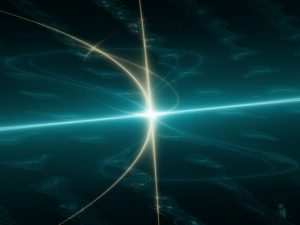
Of the ways to horribly die in space, a naked singularity is probably the least awful. Unfortunately it’s also possibly not allowed by the physics depending on the theory (the Cosmic Censorship Theory says it can’t exist, but Quantum Gravity says it’s all good). To simplify, a Naked Singularity is a Black Hole without an Event Horizon. I’ll explain those both in a few paragraphs, but they occur in nature after a very large star goes supernova and the leftover pieces crush themselves under their own gravity into a single point called a Singularity.
Now if you are in space and encounter one of these you may not even notice until it’s too late. If it’s a “classic” Hawking singularity it will be black and give off radiation that you can’t see. You’ll get too close and there will be a slight popping in the ears as the massive localized gravity rips you to pieces. If it’s a quantum gravity flavored one, it will actually look like a really bright star due to the particles falling in at almost light speed and exploding when their atoms are shredded. In this case it will act like a star until you get too close at which point the local gravity will pull you in and there’s the slight ear popping thing again, only this time the event will be brightly lit.
Magnetar
A Magnetar is quite possibly the coolest thing that you have never heard of. Basically, you get a Magnetar when a specific set of conditions is met after a star dies. It can’t be too big, because then you get a Black Hole, and if it’s too small you get a regular Red Giant dead star. If it’s just right, it dies and collapses into something called a Neutron Star. While that’s cool, it isn’t super dangerous, so it’s outside of the scope of this article. But if the conditions are perfect you get a weird assed object called a Magnetar.

Yeah I know it sounds a little like a Pokemon, but trust me when I say it’s a thing to avoid. What makes it so cool is that it has the most powerful magnetic force in the universe by several orders of magnitude. I’m saying that it’s not just a strong magnet, but it is The Strong Magnet, and it will kill you in one of most interesting ways possible. Let’s imagine you’re flying in a spaceship, and you want to take some pictures. At 100,000 miles away the magnetic field is strong enough to frag your computer systems, because it will turn all of the bits to 0. So now you’re in a flying deathtrap that you can’t control anymore, and keep floating in towards the Magnetar (it has really strong gravity to boot).
At around the 5000 mile mark you’ll start to get flashes of light in your eyes and your muscles will twitch. This is because the magnetic force is so strong that it’s dicking with the electrical pulses in your nervous and visual systems. Shortly after that it will start messing with the pulse that makes your automatic nervous system work, and you’ll have a heart attack when the electricity that makes your muscles work goes haywire. At around 2000 miles (give or take depending on the size of the Magnetar) it will lock all of the electron orbitals in your body into a more or less fixed position. Since molecules need properly functioning electrons to be molecules they will just fall apart into their constituent pieces and you will, for lack of a better word, disintegrate. But it gets better. As your atoms float towards the Magnetar the magnetic field will pull the electron orbitals into tight orbits that resemble long strings, and they will order themselves according to the shape of the Magnetar’s magnetic field, orbiting the dead star forever. The moral of this particular story is that you should use a very large telescope to get your pictures, since getting close enough to a Magnetar for a selfie will fuggin end you.
Black Hole
A Black Hole is the thing that most people worry about when they think of space travel. They’ll say things like, “what about a Black Hole?” and think it’s a smart question. It’s not. The good news is that Black Holes are somewhat rare. The bad news is that they are rare compared to stars, which are everywhere. This means that, overall, Black Holes are pretty common. They come in 2 basic flavors. The first is a regular Black Hole which is made when a star a hundred times bigger than our sun blows up and then implodes. This is how a Naked Singularity would appear too. The other kind we’ll talk about next.

If you fell in, you’ll pass a line called the Event Horizon. It’s basically the point of no return, and the gravity is strong enough that you can’t send messages out anymore, which will be good news to your exes. Once inside eventually you’ll begin to feel something called the Tidal Force. It works on a similar principle as the tides (hence the name). On Earth, when the moon’s gravity pulls the ocean it creates the tides we see. Imagine if that was happening to your body – the parts closest to the Black Hole would get pulled more than the rest of your body, and this force would increase until it ripped you apart into floating space chunks.
Or if you prefer, most Black Holes have something called an Accretion Disk, which is a giant ring of super hot material that falls into, and feeds, the Black Hole. If you’re lucky you’ll crash into that and get incinerated by super hot plasma first. Then your cooked, vaporized, bits will fall into the Black Hole anyway but at least you didn’t get treated to outer space’s version of the Rack. There’s not a lot of wins in space, so take this one.
Black Hole (Super-Massive)
A Super-Massive Black Hole is more than just a song by Muse. They’re one of the most interesting and deadly things in space. What makes them different is the “Super-Massive” part of the name. You see, astronomers do not screw around when they name things, and to be considered Super-Massive the Black Hole needs to be 100,000 solar masses or greater. To put that in perspective, the Sun is 99.86% of the entire Solar System, so a Super-Massive Black Hole needs to have enough mass (stuff in it) to be equal to 99,860 solar systems and they are often large enough to be billions of times larger. For comparison’s sake you can see about 5000 stars outside on any given night. If you took all of the stars and the planetary systems that you can see, you’d be 1/20th of the way to the smallest Super-Massive Black Hole.
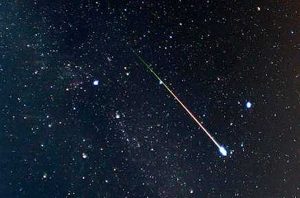
tl;dr – it’s really, really big.
Like anything else in the universe, it’s also more than happy to kill you. It’s similar to a regular Black Hole, but just a lot larger. So if you fell in you’d pass an Event Horizon that is a lot further out from the singularity. What’s interesting is that for a Super-Massive Black Hole the Event Horizon is so large you won’t immediately experience that tidal force. Instead you’ll feel and see something spectacular.
Inside the Event Horizon of a Super-Massive Black Hole you’ll be witness to something called Gravitational Time Dilation. It’s something out of General Relativity that says that the closer to the center of a gravitational force, the slower time appears from the outside. I read that if a clock was placed on top of Mount Everest and one at sea level, the clock on top of Everest would be off by 39 hours if both clocks were turned on 4 billion years ago. Basically, more gravity = slower time. Since a Super-Massive Black Hole is the most gravity anywhere as you slowly fell in and looked outwards, space itself would seem to move in fast forward. Stars would be born, turn into red giants and die. Nebula would flow like lava lamps, and whole civilizations would rise from single celled organisms to space faring empires and back to dust before your eyes. Then the stars would stop being born and the universe would go dark and cold.
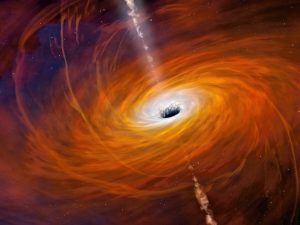
In effect, if you fell into a Super-Massive Black Hole you would get to watch the universe die. Then the tidal forces of the Black Hole would rip you apart on a subatomic level, pulling the protons from the neutrons and the quarks from each other. There might also be a slight loss of bladder control. Thankfully, these beasties like to live in the center of galaxies, and are easy to spot. Which means that intrepid space farers should have large, dark spots on their stellar charts that say, “Stay the hell away from here!”
Does all of this mean we should just stay home? No, of course not. Everything is full of danger everywhere, and there’s lot of very cool things out there in the black. Although, since the night is dark of full of terrors, it might be a good idea to take steps that avoid adding another thing to the list – Earth. It is home after all, even if it is full of snakes, sharks, bacteria and deep fried Twinkies all looking for a chance to kill you before any of the space stuff has the chance. In the meantime, always look to the stars and for the love of all that is holy, bring a good map and keep your damn shields up.

